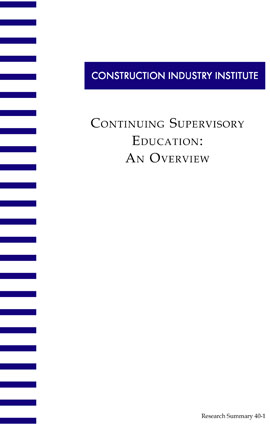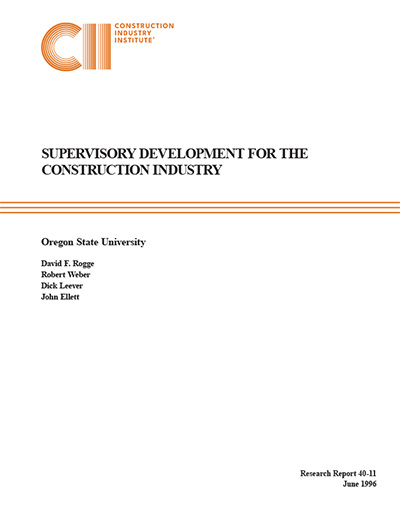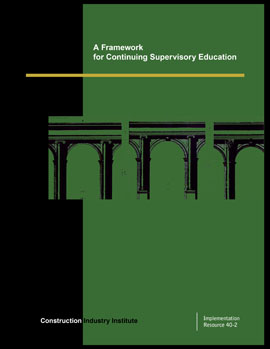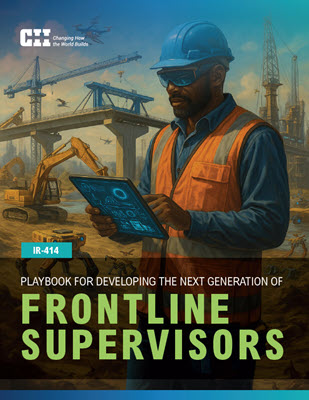
Continuing Supervisory Education: An Overview
CII member companies are actively seeking methods to improve the quality and reduce the cost of capital projects. An increase in the quality of supervisors is one way to achieve both of these goals. Research indicates that the construction industry lags benchmark companies in training supervisors as well as in using to pre-select and prepare personnel to be effective supervisors.
Although CII companies spend an average of 1.7 percent of payroll on training, this is below the three percent spent by highly successful organizations and American Society for Training and Development (ASTD) benchmark companies. Furthermore, analysis of “expert supervisors” from CII companies indicates that technical capability is the overriding selection factor for promotion to supervisory positions. Conversely, an aptitude for people skills is not necessarily considered when selecting a new supervisor.
The construction industry has demonstrated its ability to produce an order-of-magnitude improvement in critical programs such as safety and project planning. Similar improvements in productivity and work quality can be expected through the use of the recommended Continuing Supervisory Education Program. The basics of this program are presented here. A more detailed presentation is available in CII Implementation Resource 40-2, A Framework for Continuing Supervisory Education. This straightforward, seven-step development program can be implemented by any organization to improve supervisory effectiveness. These steps will provide for a logical supervisor selection process coupled with an education program that is designed to meet individual needs.
The construction industry typically does a poor job of selecting supervisors. Organizations generally promote their best workers into supervisory positions without regard to their qualifications for a completely different set of responsibilities. Recognized assessment tools, which have been proven to be successful in identifying a higher likelihood for success, were seldom employed.
To improve the supervisor selection process, companies should recognize the cost of poor selection, base selection on target competencies, consider using assessment tools, maintain pre-supervisory pools, and have alternate non-supervisory recognition for high achievers. (RS40-1, p. 10-13)
The construction industry does a poor job of training its supervisors. Once promoted into a supervisory position, most organizations provided their new supervisors with minimal, if any, training. When training was provided, it typically failed to focus on an individual supervisor’s needs. Organizations typically fail to recognize that no amount of training will suffice if the individual selected did not have qualifications to become a supervisor in the first place. The result is a “sink or swim” situation for many new supervisors that is often detrimental to the organization’s or project’s success and always negative for the individual.
Previous studies and research indicated common barriers to implementing an effective training program include lack of money, lack of time, lack of knowledge, too small of a work force, ineffective past efforts, hiring only trained workers, and a lack of employee interest. However, these barriers represent a “false economy” and can be overcome. (RS40-1, p. 6)



